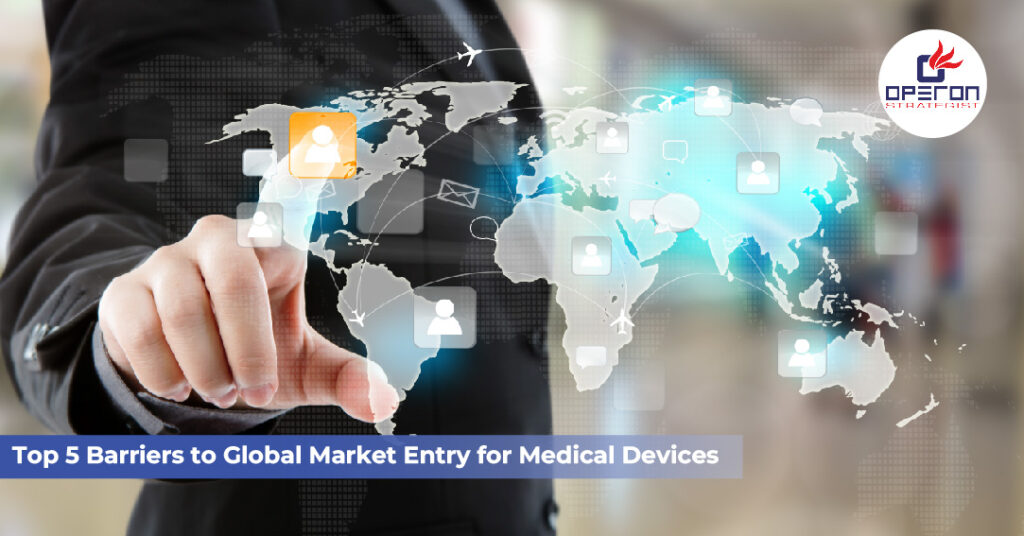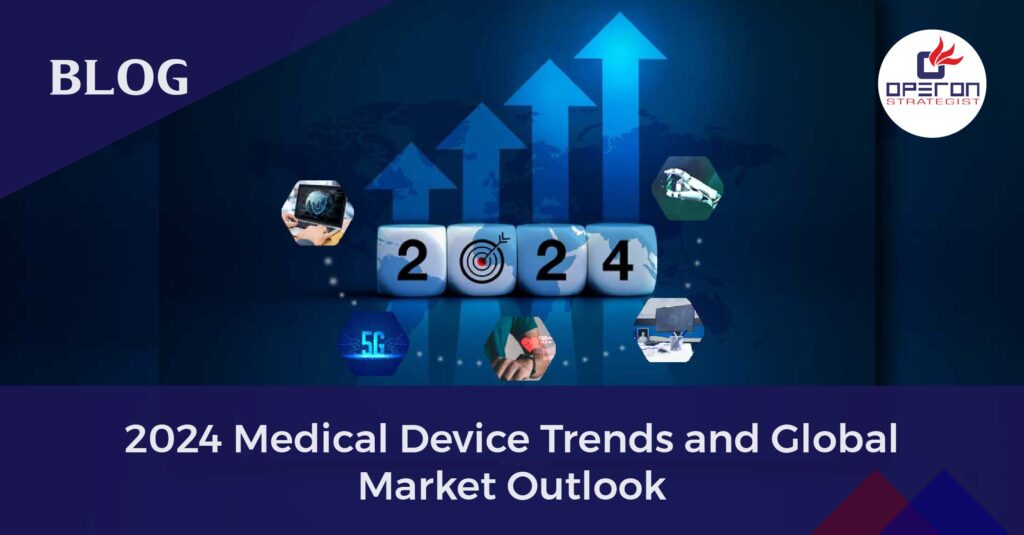Introduction
Entering the global medical device market is a massive opportunity. With rising healthcare demands, aging populations, and advances in technology, the worldwide market is projected to keep growing. But manufacturers, whether startups or established companies, often hit roadblocks when trying to expand beyond their home country.
In this blog, we will explore the top 5 barriers to global market entry for medical devices and outline practical ways to overcome them. If you are planning to expand internationally, understanding these barriers early can save time, reduce costs, and accelerate compliance.
Looking For a Medical Device Regulatory Consultant?
Let’s have a word about your next project
1. Complex Regulatory Requirements
Barrier:
Every country has its own regulatory framework for medical devices. In the USA, devices must comply with FDA regulations and 510(k) or PMA approvals. In the EU, medical devices need CE marking under MDR. In the UK, UKCA marking applies. In other regions like India, China, or Brazil, separate rules exist under their national authorities.
The complexity arises because regulations vary widely in terms of classification, documentation, clinical evidence, labeling, and quality management systems. Non-compliance often leads to delays, rejections, or even legal issues.
How to Overcome It:
- Conduct Regulatory Research: Before entering a new market, study the target country’s regulatory framework.
- Classify Correctly: Misclassification is one of the most common errors. Double-check the device classification rules.
- Partner with Regulatory Experts: Consulting firms specializing in medical device registration and compliance can help you interpret and meet country-specific requirements.
- Build a Scalable QMS: Implementing ISO 13485-compliant quality management systems ensures smoother approval in multiple markets.
2. High Costs of Market Entry
Barrier:
Launching medical devices globally is expensive. Costs include regulatory submissions, clinical trials, testing, labeling adjustments, translations, certifications, logistics, and distributor agreements. Small and medium manufacturers often underestimate these expenses.
Additionally, delays caused by regulatory hurdles or incomplete documentation can lead to wasted resources and higher overall costs.
How to Overcome It:
- Budget Early and Accurately: Create a detailed financial plan that includes all potential regulatory and operational expenses.
- Prioritize Markets: Instead of entering multiple regions at once, start with one or two key markets with the best ROI potential.
- Leverage Local Partnerships: Distributors and local partners often share part of the cost burden and help navigate compliance faster.
- Seek Expert Guidance: Consulting services for turnkey medical device projects can help optimize cost planning and reduce waste.
3. Supply Chain and Distribution Challenges
Barrier:
Even after regulatory approval, reaching healthcare providers and patients in a foreign market is not easy. Supply chain disruptions, customs delays, poor logistics planning, and weak distribution networks can delay product availability.
Moreover, device storage and transport may require strict temperature or handling conditions, adding complexity.
How to Overcome It:
- Build Reliable Distribution Networks: Partner with local distributors who understand the medical device landscape.
- Plan for Customs and Logistics: Work with logistics providers experienced in handling regulated healthcare products.
- Maintain Supply Chain Transparency: Use digital tools to track inventory, shipments, and compliance status.
- Diversify Suppliers: Avoid over-dependence on a single supplier to reduce risks of shortages.
4. Cultural and Market Differences
Barrier:
A device that performs well in one country may not succeed in another due to differences in healthcare systems, user preferences, purchasing power, or cultural acceptance. For example, patient education levels, local clinical practices, or reimbursement systems may differ widely.
Failure to adapt the product, marketing, or training to local needs can hurt adoption and sales.
How to Overcome It:
- Market Research: Conduct thorough market studies to understand local needs, hospital purchasing behavior, and patient preferences.
- Adapt Product Design: Modify device features, language, or packaging to suit local expectations.
- Train Local Healthcare Staff: Provide clear instructions, training modules, and post-market support to ensure smooth adoption.
- Adjust Pricing Models: Consider tiered pricing or reimbursement strategies aligned with the country’s healthcare structure.
5. Intellectual Property and Competition Risks
Barrier:
Entering new markets exposes your product to risks of intellectual property (IP) infringement and counterfeit products. Competitors in some regions may try to replicate your device or undercut your market share with cheaper alternatives.
This is a serious concern, especially for innovative medical devices where design, technology, or brand reputation is key to success.
How to Overcome It:
- Secure IP Rights Early: Register patents, trademarks, and copyrights in each target market before entry.
- Monitor Market Activity: Regularly track local competitors and counterfeit risks.
- Work with Legal Advisors: Hire legal experts who understand international IP protection.
- Strengthen Brand Value: Build trust through quality certifications, clinical validation, and strong local partnerships.
Putting It All Together
The barriers to global medical device market entry may seem daunting, but they are not insurmountable. Manufacturers who plan ahead, understand regulations, budget strategically, and partner with the right experts often succeed faster.
Here’s a quick summary of how to tackle the top 5 barriers:
- Regulatory Requirements: Build an ISO 13485 QMS, classify devices correctly, and consult experts.
- High Costs: Budget early, prioritize markets, and leverage partnerships.
- Supply Chain: Build strong local distribution networks and diversify suppliers.
- Cultural Differences: Adapt design, training, and pricing to local markets.
- IP and Competition: Register IP rights and protect your innovation.
Contact Us For Medical Device Registration?
How Operon Strategist Can Help You
Expanding into global markets doesn’t have to be overwhelming. At Operon Strategist, we provide end-to-end support for medical device companies, from regulatory approvals (FDA 510(k), CE, UKCA, CDSCO, MDSAP) to ISO 13485 implementation, quality documentation, and turnkey project consulting. Our team helps you navigate complex compliance pathways, set up cleanrooms and manufacturing facilities, and ensure your devices meet international standards. With our expertise, you can minimize delays, reduce compliance risks, and enter new markets faster.




